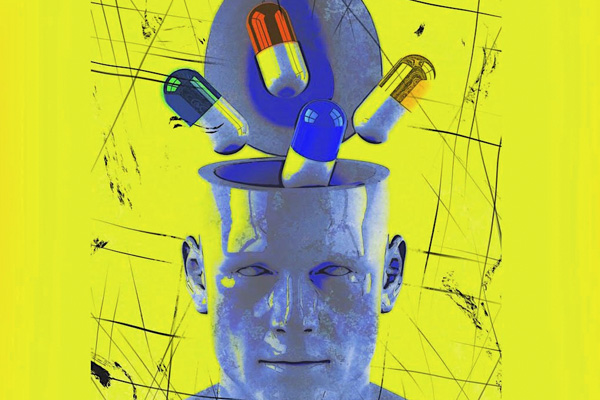CHEMICALS THINKING –
August 8, 2021 – Despite the details, the general theme is the same: someone starts having “psychiatric symptoms,” they are diagnosed with a psychiatric disorder and prescribed medication. Due to the medication, they experience even more severe psychiatric symptoms and then they are diagnosed with another, and usually more severe, psychiatric disorder. The story continues with more and more medications and diagnoses being added over time. In addition, patients also begin experiencing side effects to the medications, which are often labeled as new symptoms, leading to even more diagnoses and of course even more medications. Once the vicious cycle of medications, symptoms, and diagnoses is started, it’s like a runaway train.
If I were a conventional psychiatrist, I would say that the case described above illustrated that ADHD and bipolar disorder are “comorbid conditions,” meaning that they frequently occur together in the same person. Conventional psychiatrists use the DSM-5 (“psychiatric bible”) to diagnose psychiatric conditions based on a checklist system. If you have x, y, and z symptoms, then you have that disorder.
It is extremely common that one person will meet the criteria for and be diagnosed with multiple psychiatric disorders. In fact, I may have only seen a handful of patients in my entire career who had only been diagnosed with one psychiatric disorder.
Once a diagnosis is made from the checklist, medications are then prescribed to treat the so-called disorder and symptoms. This is regarded as a rational approach by most conventional psychiatrists.
I will now tell the same story above, but from my (holistic) perspective. Jason grew up in a loving home. However, when Jason was 5, he was molested by his uncle and his family was not aware. This impacted Jason deeply, and in fact it affected him on a mental, physical, and spiritual level. The trauma was never processed and hence it continued to re-appear in Jason’s life on all three levels.



